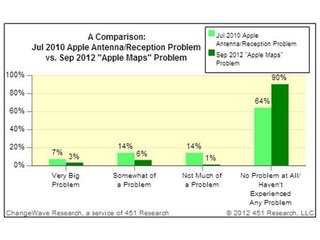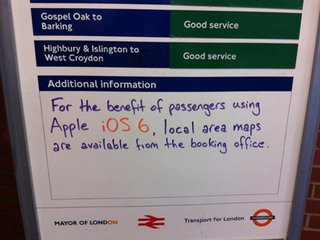 Less than 48 hours after Google released its Maps app for iOS, it’s already received over 10 million downloads. That’s according to Jeff Huber, Google’s SVP of Geo and Commerce.
Less than 48 hours after Google released its Maps app for iOS, it’s already received over 10 million downloads. That’s according to Jeff Huber, Google’s SVP of Geo and Commerce.
“We’re excited for the positive reception of Google Maps for iPhone around the world. Congratulations to the Maps Team on the recognition for the passion and hard work they poured into it, for this release and over the last 7+ years,” Huber wrote in a Google+ post.
After the app made its debut Wednesday night, it rapidly fired its way to the top of the free apps list in the iTunes App Store, where it remains today.
Available for iOS 5 or higher, naturally, it’s better than the native application that was scrapped this year in favor of Apple’s own Maps app, which obviously didn’t go over very well. The Google Maps app now features voice guided turn-by-turn directions, which was the main issue that caused the Apple/Google fissure in the first place. It also comes with Google Local Search and—most importantly—public transit directions.
The Apple Maps fiasco caused much heartache among diehard Apple fans. There were complaints that the directions aren’t entirely accurate, that searches for local landmarks and businesses turn up inconsistent results, and of course the flyover display is, on occasion, totally whack.
But there was also the issue of public transit directions, which Apple’s Maps app was missing altogether. Sure, those who rely on public transportation could just use HopStop or any of the other public transportation apps out there, but it was the principle of the thing.
Ultimately, this is one more example of how dueling companies grappling for market share often has the unintended consequence of shafting of the customer. Earlier this month, the competition between Twitter and Facebook resulted in Twitter cutting off support for Instagram images.
The discord between Apple and Google has been raging for years as Android has penetrated the smartphone market like a virus, becoming the most widely used operating system in the U.S. But the unrest came to a head with Google’s refusal to give Apple an updated Maps app that offered voice guided directions. The result: Apple scrapped not just Google Maps, but the native YouTube app as well.
Consequently, Google’s Maps and YouTube apps are two of the top 10 free apps in the App Store. YouTube has been in the top 10 for months—ever since it was given the boot as a native application.
The moral of the story: striking back at a competing company by cutting off your support for their tools doesn’t win you more ground in the market; it just pisses off your customers.
Image source: parcel2go.com




















